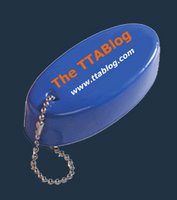The USPTO refused registration of the proposed mark MUSIC.AI under Section 2(e)(1), deeming the mark merely descriptive of software for creating and modifying audio recordings, including musical audio recordings. Applicant Moises Systems argued that the mark is a unitary term and a double entendre, and that no other person or entity "is using MUSIC.AI with a period between the terms." How do you think this appeal came out? In re Moises Systems, Inc., Serial No. 98142204 (November 26, 2025) [not precedential] (Opinion by Judge Elizabeth A. Dunn).
Not surprisingly, the Board found the term MUSIC to be "highly" descriptive of applicant's software, noting that the software facilitates the creation and modification of "music, songs, sounds, and audio recordings." "The identification of goods and services therefore serves as evidence of mere descriptiveness."
As to the term AI, the evidence indicated that the term "is a noun, or the abbreviation, for 'artificial intelligence,' which is defined as 'software designed to imitate intelligent human behavior.' Applicant’s software is described broadly enough to encompass software using AI to perform its functions." Examining Attorney Cindy Nguyen submitted website excerpts from various websites using the term AI to refer to music production software (e.g., Remusic - AI Music Creation and Music Learning Platform).
Applicant Moises Systems pointed to third-party registrations for marks containing the term “AI” on the Principal Register without disclaimer of AI (e.g., keybe.ai). The Board was not impressed. Many of the registered marks combined AI with either a distinctive term or a design element, and so "the presence of AI in the mark does not establish that the term AI is distinctive." Moreover, three of the registrations were 14 years old or older.
While there is no evidence that the term “artificial intelligence” is new, the record indicates that the use of AI in software available to the general public is a more recent occurrence. *** "[T]he location of a new term on the spectrum of distinctiveness is anything but static. The USPTO has, and must have, the freedom, over a period of decades — or increasingly, just years — to consider such questions anew whenever the evidence compiled in a new, unique record reflects such dynamic changes."] (quoting In re ActiveVideo Network, Inc., No. 77967395, 2014 TTAB LEXIS 283, at *27-28).
The Board found that the remaining evidence of seven third-party registrations on the Principal Register for the term AI "combined with presumptively descriptive matter does not rebut the evidence that the term AI is descriptive as applied to Applicant’s software."
Considering the combined terms, the Board noted the third-party use of the term MUSIC AI to describe a type of software using artificial intelligence for music applications" (e.g., ResearchGate - How Music AI Is Useful: Engagements with Composers, Performers and Audiences). At its own website, Moises uses both MUSIC.AI and MUSIC AI (no period) for software to facilitate creation and modification of "music, songs, sounds, and audio recordings."
As to the argument that MUSIC.AI is a unitary mark that would not be perceived as the descriptive term MUSIC AI, the Board disagreed. The Board again pointed to Moises's own website, where Moises uses term without a period.
In general, the presence of punctuation does not alter the commercial impression of a literal term. *** In view of the considerable evidence of third-party use of MUSIC AI for music software, we find that this case is no exception, and the addition of the dot does not alter the mere descriptiveness of MUSIC.AI as a whole.
As to the no-other-user argument, the Board once again observed that "[t]he fact that an applicant may be the first and only user of a merely descriptive designation does not justify registration if the only significance conveyed by the term is merely descriptive."
Finally, Moises argued that because .AI is a top-level domain, or part of an internet address, and MUSIC.AI is Applicant’s domain name, MUSIC.AI is a double entendre, but the Board found that argument way off-key: "having a top-level domain as part of the mark does not preclude the mark being merely descriptive. We find probative the sixteen third-party registrations with the suffix .AI that issued in the last six years on the Supplemental Register: Registration on the Supplemental Register indicates that the mark is not inherently distinctive, e.g., because it is merely descriptive."
In short, "the terms MUSIC and AI do not lose their merely descriptive significance when joined together by a period, nor does the composite itself result in a unique or distinctive meaning which differs from the meanings of the terms considered separately." And so, the Board affirmed the refusal.
Read comments and post your comment here.
TTABlogger comment: AI is the country code top-level domain (ccTLD) of Anguilla, a British Overseas Territory in the Caribbean.
Text Copyright John L. Welch 2025.























